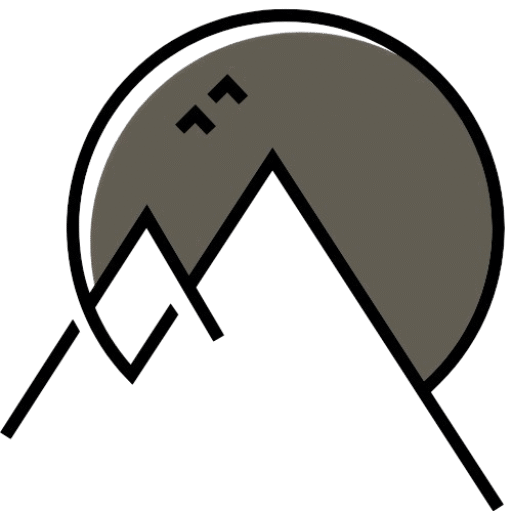Surrounded by 6,000-meter peaks, with Nanga Parbat flickering in the distance, Khun Meadows doesn’t feel real at first. The landscape in Khaltaro Valley is remote, wild, and completely cut off from Pakistan’s usual trekking circuits. And that’s what makes it special. No crowds. No mobile signal. Just rock, glacier, and silence.
I hadn’t hiked in a while and needed something worth the sore legs. I’d also somehow convinced friends to fly in from Europe and the US. No pressure – just had to deliver the trip of a lifetime to people who’d never seen Pakistan before. After hyping up these mountains ti them for years, I was banking on Khaltaro to prove me right.
Where is Khaltaro Valley?
Khaltaro is one of three sub-valleys in Haramosh Valley, part of the Rakaposhi-Haramosh massif in Gilgit-Baltistan. It sits about 100 km east of Gilgit city and gets far less foot traffic than its sibling, Kutwal Valley.
That’s part of the draw. Khaltaro is mostly off the map for mainstream trekkers, which means the trails are quieter, the campsites cleaner, and the views uninterrupted. If you’re looking for a solid trek without the buzz of commercial tourism, this is a good one to have on your list.
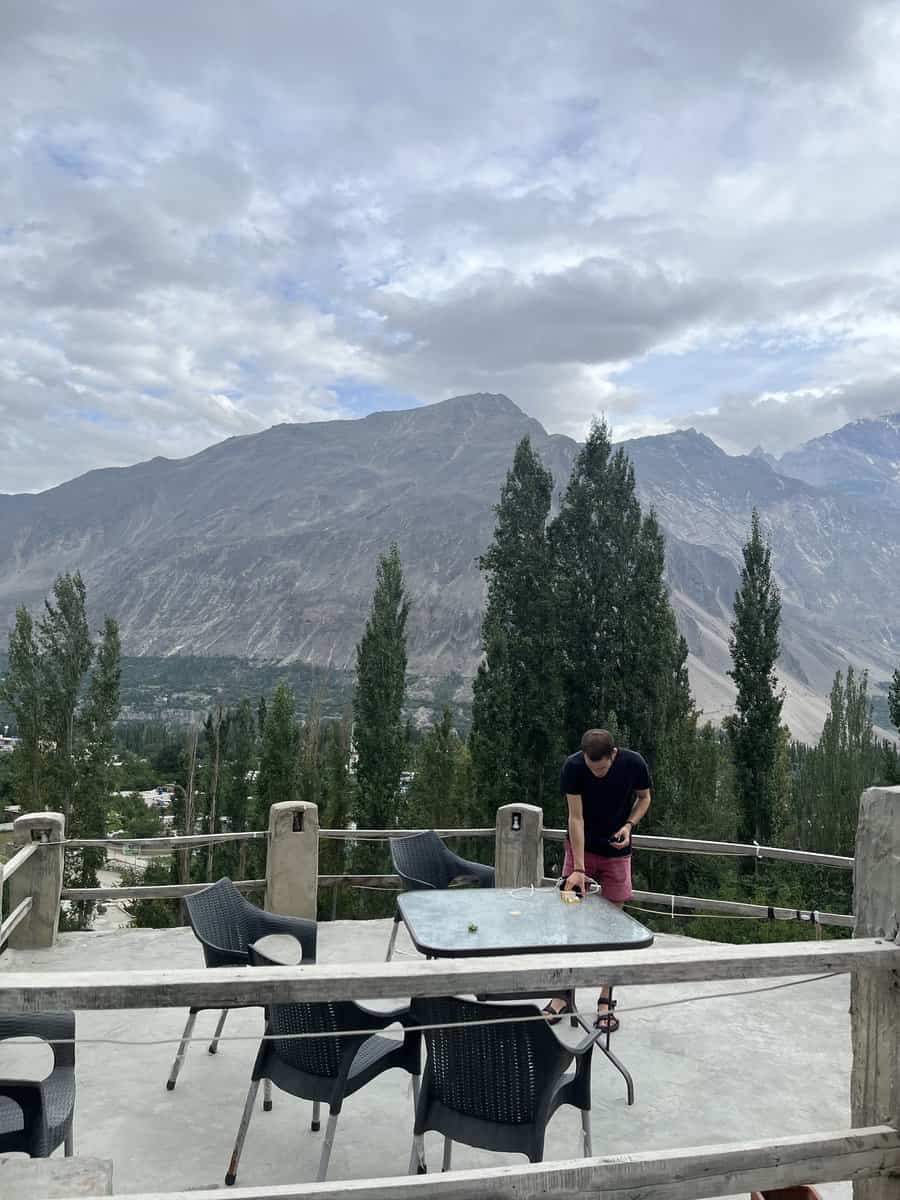
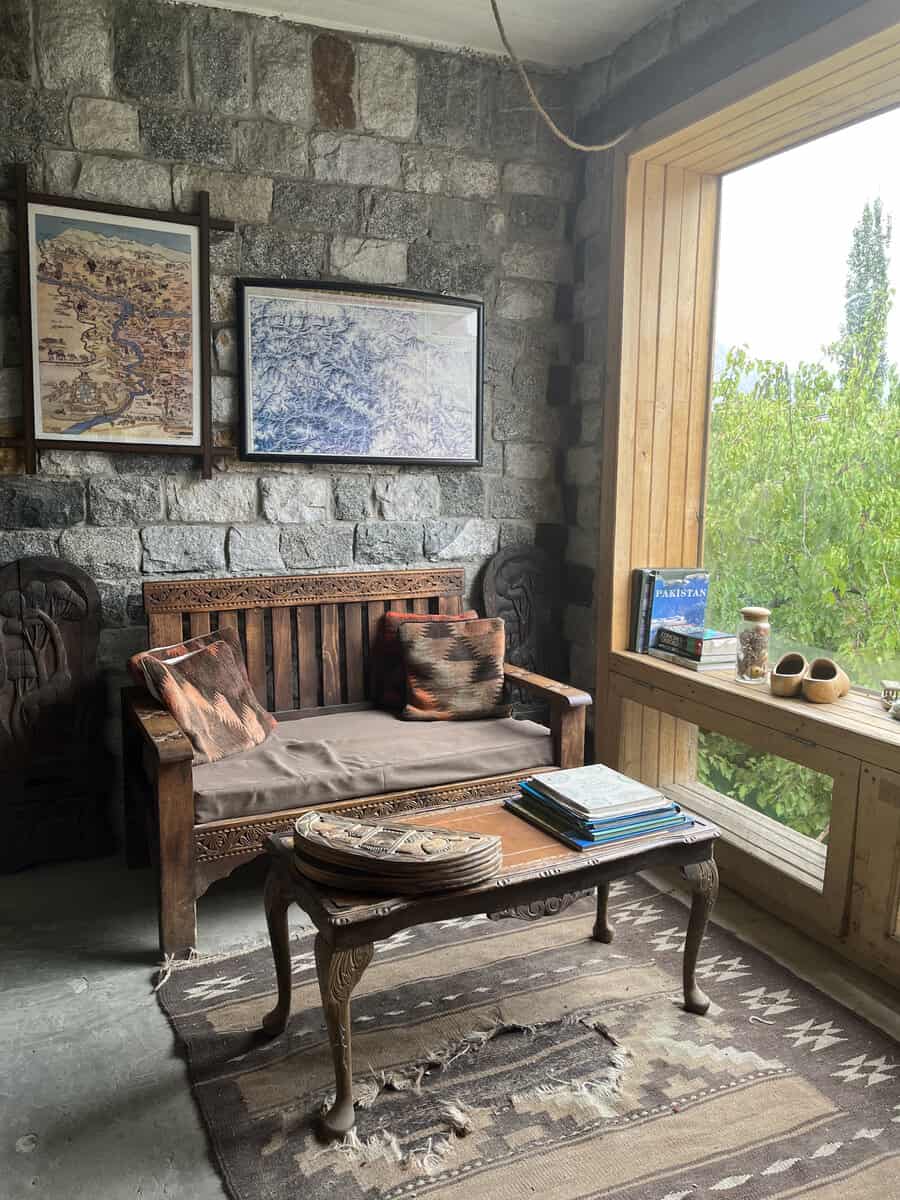
How to Get to Khaltaro
Journey from Islamabad to Gilgit
We were running on a tight schedule, with friends flying in from all over the world. I had planned for us to fly straight to Gilgit city from Islamabad, but of course, our flight got cancelled at the last minute. So we scrambled, rented a minivan, and drove north instead—after killing time with some things to do in Islamabad while we figured out our Plan B.
If you’re luckier, you might be able to fly. Pakistan International Airlines (PIA) operates daily flights from Islamabad to Gilgit, but delays and cancellations are common due to weather. If you’re on a tight schedule, plan some buffer days just in case.
The road trip, though long (roughly 15–18 hours), is an experience in itself. The Karakoram Highway runs through stunning river valleys and rugged terrain—if you can handle the ride, it’s a solid alternative.
Transportation Options
There are a few ways to get from Islamabad to Gilgit:
- Private Vehicle: You can rent a car with a driver, which gives you the most flexibility. There’s no official site for this – most people find drivers through local contacts or by posting in Facebook groups like The Karakoram Club, where travelers often share updated recommendations and phone numbers.
- NATCO Bus: The cheapest option. NATCO runs daily services from Islamabad to Gilgit. It’s a long ride but reliable and comfortable enough if you’re used to long-haul buses.
- Flight: If you get lucky with weather, flying cuts the trip down to just an hour. Book in advance and confirm your seat the day before.
The highway itself is around 600 kilometers and passes through some of the most jaw-dropping scenery in northern Pakistan. Once you arrive in Gilgit, you’ll need to switch to a 4×4 jeep for the final stretch into the valley.
Jeep Ride to Khaltaro Valley
From the village of Sassi, the road ends—and the real ride begins. The only way forward is by jeep, and it’s not for the faint-hearted. The track is a narrow gravel strip wrapped around the side of a mountain, with massive drop-offs and zero room for error.
It’s one of those drives where you keep one hand on the “oh shit” handle and try not to look down. But the views are unreal—peaks like Malubiting (7,453m) and Dobani (6,143m) show up early, peeking through the valleys like they’re watching you arrive.
We met our guide at the Sassi Hydel Power Station, loaded up the jeep, and bounced our way toward Khaltaro village. It took about 30 minutes of sliding around corners and holding our breath to reach the valley floor at 2,500 meters. By then it was afternoon, so we camped just beyond the village to rest up for the trek ahead.
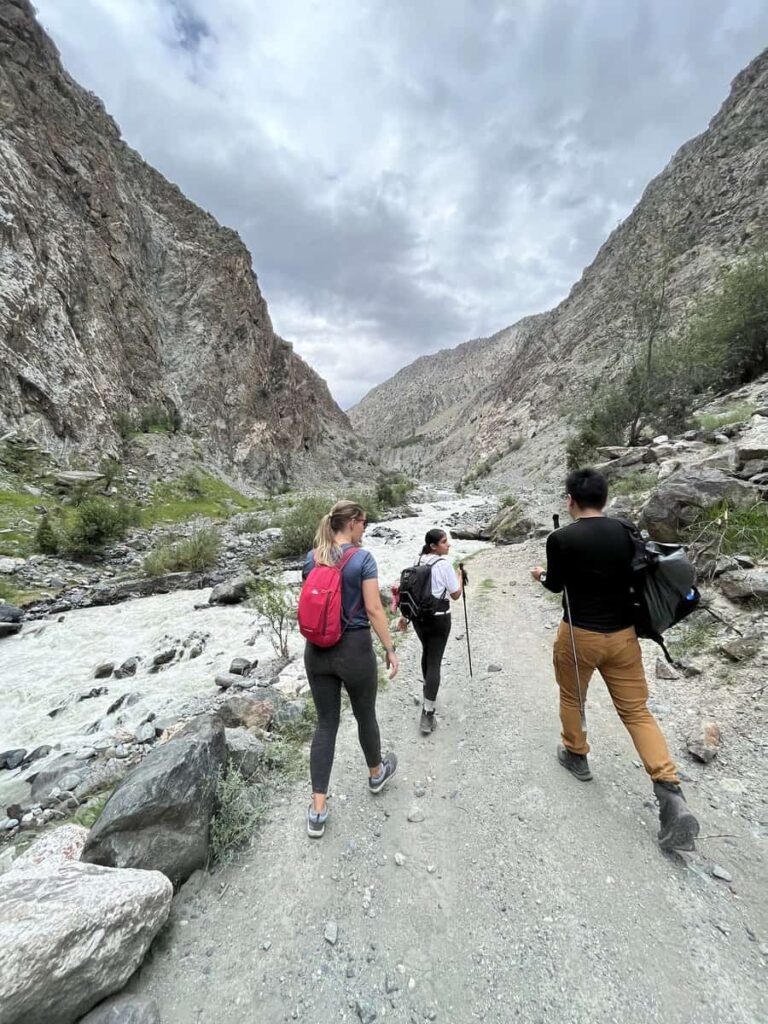
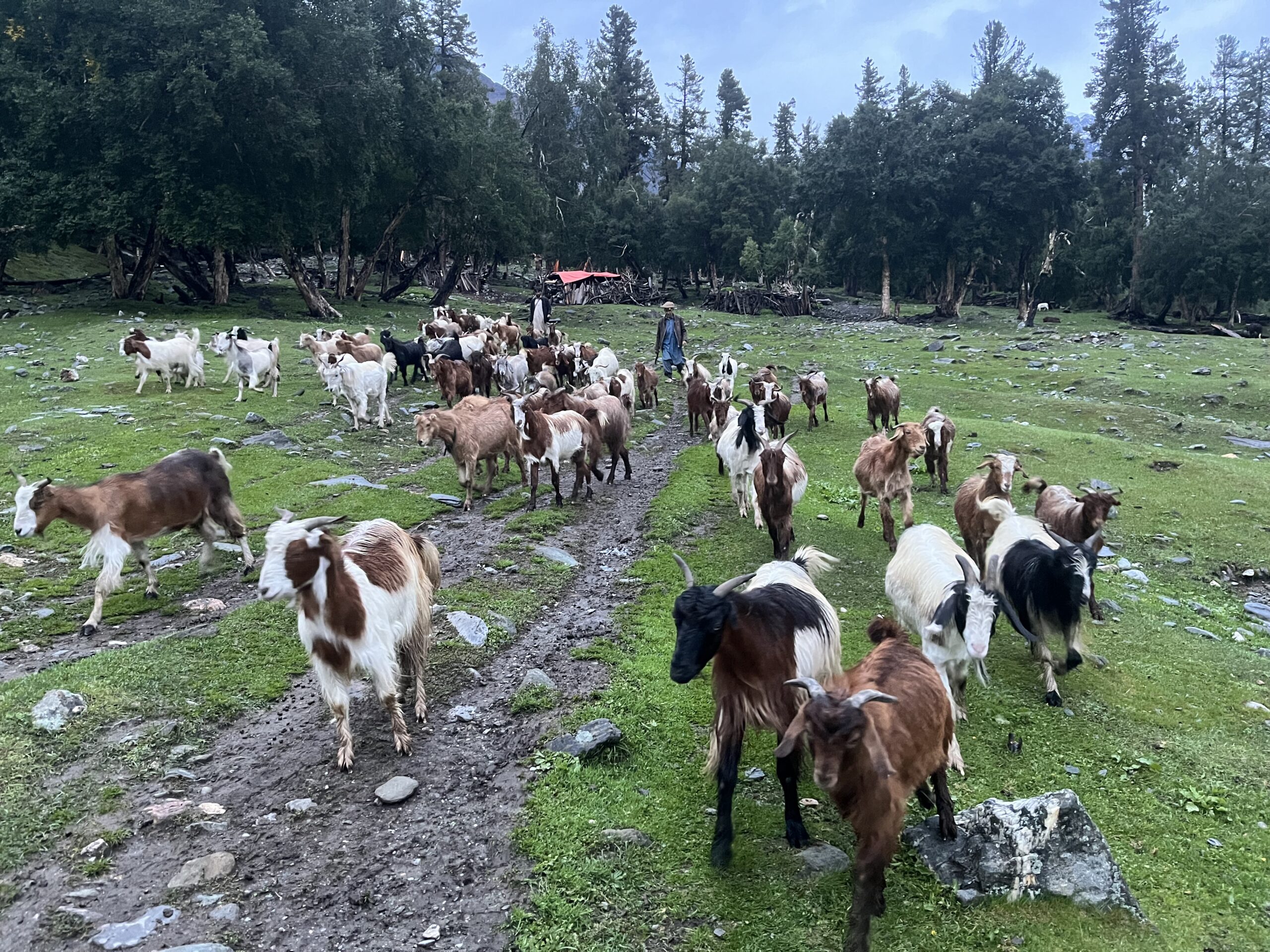
Trek Overview and Details
Day 1: Hunza to Khaltaro Village
If you’re thinking of starting the trek the same day you land in Gilgit, don’t. Technically, it’s possible but it’s not worth the rush. I’m long past cramming too much into one day. We spent the night in Aliabad, Hunza, which gave us a bit of breathing room and a chance to unwind in one of the few mountain towns I never get tired of. If you haven’t been before, this is your window to explore what makes Hunza so special before heading off-grid.
I’d hiked through Kutwal before, so I already knew this region had more to offer. From Hunza, we drove to Sassi – the last place with a paved road. After that, it was into a jeep for the final 15 kilometers of what I can only describe as a “hang-on-and-hope” ride. The track wraps tightly around the mountains, with steep drop-offs on both sides. The kind of drive that shakes you awake.
As we climbed deeper into the valley, the peaks started showing themselves. Malubiting (7,453m) and Dobani Peak (6,143m) came into view, jagged and massive against the sky. About 30 minutes later, we reached Khaltaro village at 2,500 meters. It was already mid-afternoon, so we called it a day and camped just ahead of the village.
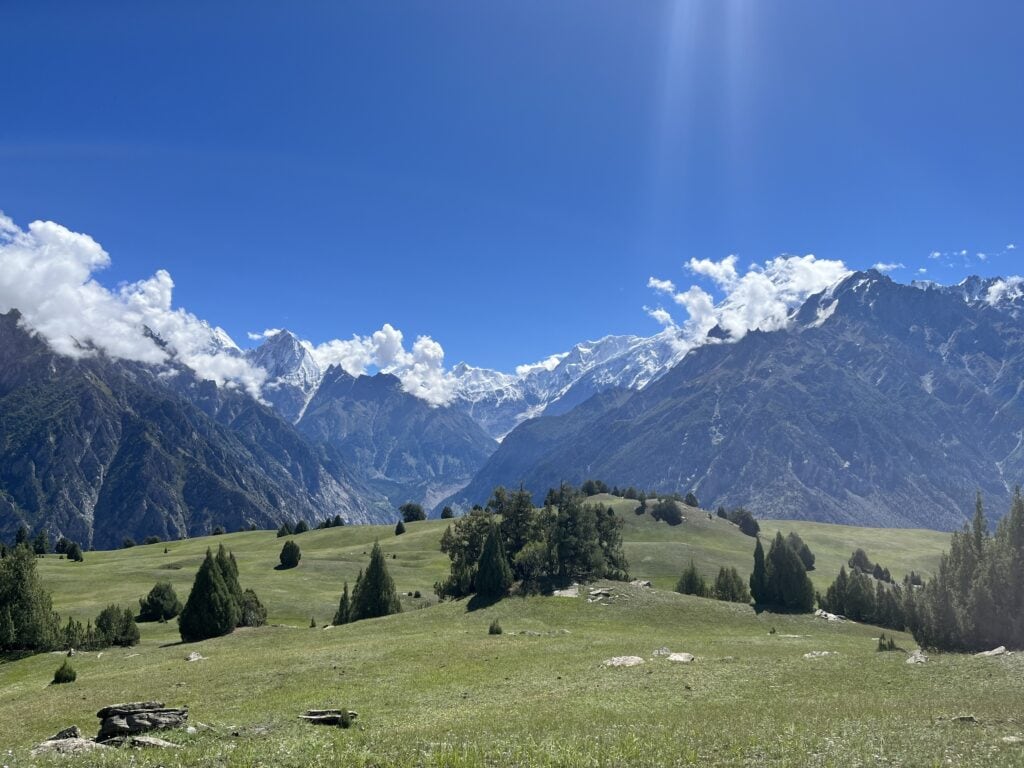

Day 2: Khaltaro Village to Rakhan Gali Base Camp
We set out from Khaltaro the next morning, finally hitting the trail. The path climbs gently at first, winding alongside the Khaltaro Nala through pine-covered slopes and scattered shepherd villages. It’s shaded, peaceful, and just challenging enough to get your legs warmed up.
By early afternoon, we reached Rakhan Gali Base Camp, just past the Pamiri village. Locals here sometimes mine for emeralds, aquamarine, and fluorite—tiny specks of color pulled from the grey rock.
The real highlight, though, is the waterfall cluster near Darchan Glacier. There are seven in total, pouring down in sheets across a jagged cliffside. We dropped our gear and spent a few hours exploring on foot, watching sunlight hit the mist in just the right way.
If you’ve got the time (and stamina), you can push past the base camp and up to Rakhan Gali Pass itself. The trail eventually connects to Bagrote Valley on the other side. On a clear day, you’ll catch views of Rakaposhi (7,788m) and the entire Bagrote stretch laid out below. We didn’t bother. Sometimes it’s better to just sit still and take it all in.
That night, we pitched camp nearby. No noise, no lights—just us, the sky, and the distant rumble of falling water.
Day 3: Rakhan Gali Base Camp to Khun Meadows
On Day 3, we retraced our steps from the base camp and ventured further toward Khun Meadows. The scenery quickly shifted from rugged terrain to vibrant stretches of wildflowers, and it was like stepping into a whole new world. The meadows are tucked away, hidden from the usual trekking routes, and the backdrop of the Karakoram peaks makes this part of the trek absolutely stunning.
The air up here feels fresher, cleaner, and the silence is only broken by the occasional rustle of the breeze through the grass. As you hike, you’ll be treated to jaw-dropping views of major peaks like Haramosh-I (7,409m), Mani Peak (6,685m), and Jutial (5,641m). If the weather is on your side, you might even catch a glimpse of Nanga Parbat’s Raikot face (8,126m), which is a rare treat from this location.
When we arrived at the meadows, it was like a scene from a postcard—the drizzle that had followed us all day suddenly gave way to bright sunshine, transforming the landscape around us. After setting up camp, we spent the rest of the evening by a small bonfire, taking in the breathtaking panorama of the surrounding peaks. It was one of those perfect moments where you feel totally disconnected from the world but in the best way possible.
Day 4: Khun Meadows to Hunza
We woke up knowing it was our last morning in the mountains, and none of us were ready to leave. We followed the same trail back down to Khaltaro village, moving slower than we had on the way up.
On the way, our guide invited us to his home. His family welcomed us in with fresh bread and a homemade dessert—simple, warm, and exactly what we needed after the long walk. These are the moments that stick more than the landscapes.
By the time we reached the village and said our goodbyes, we were tired, sunburnt, and pretty gutted the trip was over. We climbed back into the jeep and made our way toward Hunza, already tossing around ideas for the next trek.

Additional Side Trips from Khaltaro
If you’ve got extra days to spare, crossing Rakhan Gali Pass into Bagrote Valley is worth it. The pass isn’t too technical or long – easier than Haramosh Pass- but still offers enough of a challenge to keep things interesting.
The trail winds up a steep, zigzagging slope with occasional rockfall, so you’ll need to stay alert on the ascent. At the top, you’ll get views of Diran and Miar Peaks, especially if you hit it early in the day. The descent into Bagrote is steeper and full of scree, but peaceful summer settlements like Gargoo make the effort feel earned.
From Gargoo, you can hitch a ride back to Gilgit by jeep, where a real bed and hot shower start sounding pretty good.
Planning Your Trip
When to Go
- Best months: May to August — snow has melted, meadows are green, weather is stable (mostly).
- Avoid winter: Heavy snow cuts off access.
- Always check weather conditions with locals before setting out. Mountains can surprise you.
Trekking Logistics
- Permits: None required.
- Guides: Strongly recommended. Much of the terrain is unmarked, and getting lost is a real risk. If you’re not sure where to start, feel free to drop a comment below — I’m happy to share guide recommendations.
- Porters: Can be arranged through your guide if needed. Don’t expect to find anyone last minute.
Supplies & Gear
- Stock up in Gilgit. Once you leave, there are no shops along the way. Sassi and Khaltaro have no gear, no food supplies.
- Bring your own gear. While some basic rentals exist in Gilgit or Hunza, it’s better to travel with everything you need—tent, sleeping bag, layers, and cooking gear if you’re not using a guided package.
Water & Food
- Water: Streams are plentiful, but bring a filter or purification tablets just in case.
- Food: Plan and pack all meals. Don’t rely on finding anything en route. Guides will usually help cook, but you’ll need to supply ingredients.
Weather
- Daytime is warm enough for T-shirts. Evenings can drop below freezing depending on elevation.
- Rain can roll in without warning – pack waterproof layers and a solid sleeping bag.
- Wind picks up in exposed areas like Khun Meadows.
Money
- No ATMs after Aliabad, Hunza. Bring cash—enough for guides, jeep fares, tips, snacks, and emergencies.
- Most guides and porters prefer being paid in Pakistani Rupees.
Safety in Khaltaro Valley
Trekking in Khaltaro is remote. Once you leave Gilgit, there’s no phone signal, no medical facilities, and no easy way out if something goes wrong. That doesn’t mean it’s unsafe—it just means you need to be prepared.
- Always trek with a guide. Trails are unmarked, and it’s easy to lose your way.
- Travel with a group if you can. Solo trekking here isn’t recommended.
- Carry a basic first-aid kit and any personal medication. Evacuations aren’t simple.
- Let someone in Gilgit or Hunza know your expected return date before heading out.
For broader travel concerns—including what it’s like traveling as a woman—check out my post on safety in Pakistan.
Connectivity
- No signal, no wifi—at all. From Sassi onwards, you’re off-grid.
- Let someone know your trekking dates and expected return in case of emergencies.
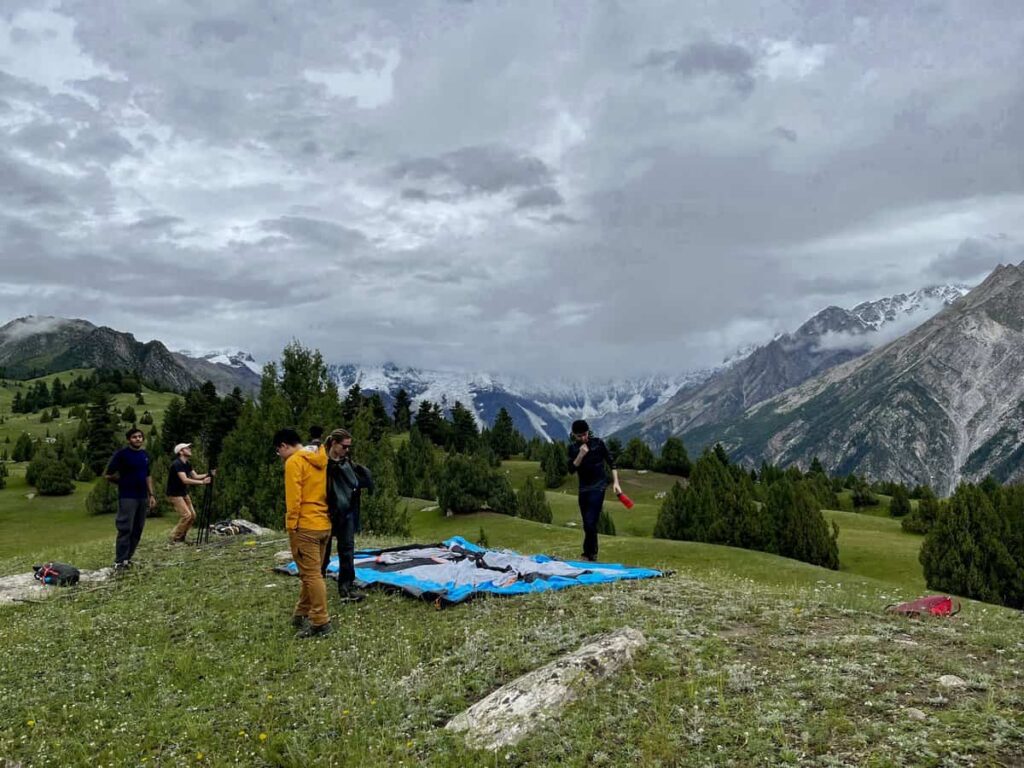
Cost Breakdown
Accommodation
No guesthouses on the trail. You’ll need your own camping gear. Budget for stays in Gilgit or Hunza before and after the trek.
Transport
- Jeep (Sassi to Khaltaro): ~$50 USD one way
- Bus (Islamabad to Gilgit): ~$10 USD
- Flight (Islamabad to Gilgit): ~$150 USD (if it doesn’t get cancelled)
Guides & Porters
- Guide: $50–70 USD/day
- Porter: $10–15 USD/day
- Donkeys (optional): Extra
Food
- ~$30 USD/day for basic meals and snacks
- Pack enough for your team—guides and porters included
Where To Stay In Hunza/Gilgit
Both Hunza and Gilgit have lots of accommodation options based on your travel style and budget. Here are my recommendations:
Gilgit | Gilgit Oak Residency is a solid choice – comfortable rooms, reliable food, and a good base to stock up on supplies.
Hunza | Serena Hunza is the go-to. It’s on the pricier side but the mountain views and central location make it worth it if you’re looking to rest before or after the trek.
Why Khaltaro Valley Should Be on Your Bucket List
Khaltaro isn’t on most trekking maps, and that’s exactly why it’s worth your time. The rough roads, quiet trails, and raw mountain views give you a side of Gilgit-Baltistan that most travelers never see.
If you’re planning a bigger northern Pakistan itinerary, Khaltaro is the kind of side trip that makes the journey stand out. And if it’s your first trip to Pakistan, this trek is a reminder of what the country offers beyond the well-known spots.
From the jeep ride to Sassi to camping in Khun Meadows, the valley gives you the kind of adventure you carry home with you—and probably start planning to repeat.
